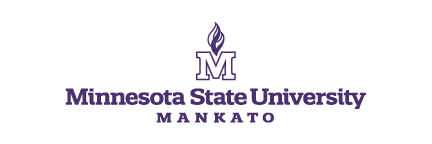Three-Dimensional Science Instruction: Discovering a High Impact Instructional Practice in Teacher Education
Thursday, January 5, 2023
10:40 AM - 11:30 AM
Zoom
PRESENTER: Trish Arnold, Ph.D., Elementary and Literacy Education
"With much anticipation, the Minnesota Department of Education approved the new science content standards for use across all K-12 schools in September 2021. Although they were modified to fit the unique needs of Minnesotans, these new standards were aligned very closely with the Next Generation Science Standards and its 21st-century model of science education known as three-dimensional instruction. Described by experts as a “paradigm shift” (NRC, 2012; Schwartz et al., 2017), three-dimensional instruction moves teaching science away from the traditional approach of “learning about” science as discreet, unrelated facts to “figuring out” science through interdisciplinary, cohesive modules driven by student curiosity to explain naturally occurring phenomena (National Academies of Sciences, Engineering, and Medicine, 2015). Grounded in several decades of teaching and learning research, the central dogma of three-dimensional instruction lies in the integration of scientific knowledge AND scientific practices, meaning that the NGSS suggest that science be taught in a manner where disciplinary core ideas (DCIs) are learned through, and with, the reiterative use of eight scientific and engineering practices (SEPs), not as two separated domains of instructional practice. For most pre-service elementary teachers, this type of science teaching and learning is markedly disparate from their own K-12 science experiences, leaving them with a teacher centered lens of science education replete with lecture driven lessons and cookbook labs.
Without an innovative response to the newly adopted state science content standards, many prospective elementary teachers will be left underprepared without a clear understanding of how to successfully implement three-dimensional instruction in their future classrooms. An unsettling consequence of underprepared elementary teachers in the teaching and learning of science is the presence of a “no science zone” in most elementary classrooms across our nation, placing an unfair burden on our secondary science education partners (NRC, 2012; Schwartz et al., 2017). According to the research, a major factor behind these “no science zones” is low science teaching self-efficacy in our elementary teachers. Without authentic three-dimensional science experiences in their preparation programs, our pre-service elementary teachers lack the skills, attitudes, and dispositions to successfully navigate three-dimensional instruction as outlined in the newly adopted science content standards.
For this presentation, the author will present the results from a mixed method study that investigated the impact of an integrated NGSS-designed “working shop” learning sequence within an introductory science methods course on pre-service teachers’ perceptions of their self-efficacy when teaching science using three-dimensional instruction. Additionally, this presentation will also share valuable insights for teacher education on the successes and challenges of implementing the integrated NGSS-designed “working shop” learning sequence which has the promise of being a high impact instructional practice based on the positive shift in pre-service elementary teachers’ self-efficacy when teaching science using three-dimensional instruction.
"
Center for Excellence in Teaching and Learning
cetl@mnsu.edu


